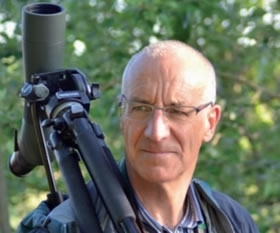 Andy Clements, director of the British Trust for Ornithology, gives his opinion about the work of the GWCT.
Andy Clements, director of the British Trust for Ornithology, gives his opinion about the work of the GWCT.
BTO and the GWCT share values and a history of effective collaboration. Both organisations have for many decades undertaken impartial and independent science to inform conservation and land management.
This science is underpinned by data often collected voluntarily – 60,000 volunteers participating in BTO surveys, and GWCT members and supporters recording what’s on the land around them.
Our GWCT and BTO professional scientists depend on this data for analysis and interpretation that enables us to offer advice and inform conservation issues.
We have a history of joint collaborative research. Currently, as we all respond to the need to develop our approaches to nature conservation, landowners are increasingly asking the BTO for help in monitoring not just their wildlife contribution to environmental health, but how to measure their impact on ecosystem services and natural capital.
Maintaining momentum of our collaborative research, GWCT and BTO with other landowning interests are, for example, developing joint work to understand the habitat choices of curlew in the Pennines.
At the start of 2017, one of our biggest challenges is to move the polarised debate in the uplands to the middle ground of solutions that can work for everyone. The issues of driven grouse shooting, predator control, hen harrier persecution and wader declines are all linked.
High quality peer-reviewed scientific research has a strong role to play in identifying land management solutions in the uplands, and partnerships involving both BTO and GWCT will be central to achieving progress here. In undertaking joint study, we should remember to uphold the highest degree of impartiality – it shouldn’t be the goal of either organisation to demonstrate through science that managed grouse moors are either better or worse than other upland habitats for breeding waders.
We should design studies that enable the most powerful and robust analyses, and agree the interpretation of results away from the tempting soundbite. We will undoubtedly have to defend our approach from others who seek to make mischief, one way or the other, out of the findings of impartial research. To be of most value, scientific findings need a practical application through engagement with stakeholders – often practitioners in the management of countryside.
As demonstrated by BTO’s partnership in Scotland’s Moorland Forum Understanding Predation project, we would agree with GWCT that, while weighing real practitioner evidence in the mix with scientific evidence is valuable, it is important to distinguish between evidence and beliefs.
As the GWCT relies for its support on a particular constituency of farmers and landowners, care is required to focus on evidence over belief. GWCT’s recent published position on wader declines, relying as it did on BTO data with accuracy and appropriate weight, demonstrated the best approach.
Please support our vital woodcock research